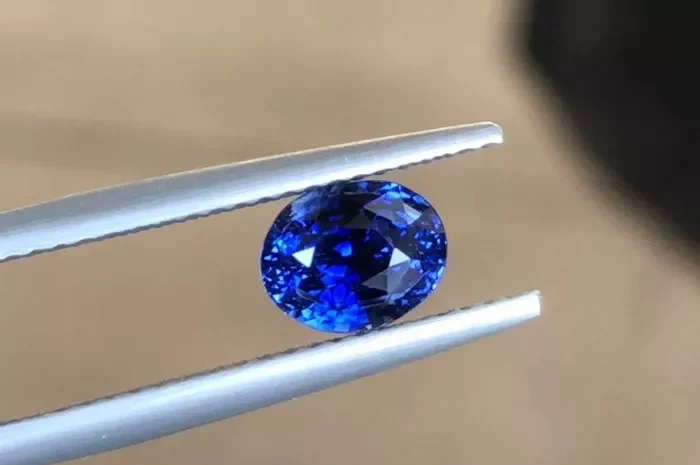Coral and yellow sapphire are two distinct materials used in jewelry, each with their own set of characteristics that are important to consider when identifying quality. Understanding these differences is crucial for both jewelry appraisers and consumers alike. While they may both be used in ornamental pieces, their nature, origin, and physical properties vary significantly, leading to different criteria for determining quality.
Coral Quality Identification
Species and Origin
There are different species of coral used in jewelry, such as red coral (Corallium rubrum) which is highly prized. The origin of the coral plays a significant role in its quality. For example, coral from certain regions may be of higher quality due to environmental factors. Mediterranean red coral has long been renowned for its fine quality. The growth environment, including water temperature, salinity, and nutrient availability, can affect the texture and color of the coral.
However, it’s important to note that many species of coral are now protected due to over – harvesting, and trading in wild – sourced coral is highly restricted.
Color
Color is a key factor in coral quality. For red coral, a deep, vivid red is considered the most desirable. The intensity and uniformity of the color are important. Coral with a dull or patchy color is of lower quality. The color should be consistent throughout the piece, whether it’s a bead or a carved object.
In addition to red, there are other colors of coral like pink and white. Each color has its own range of quality assessment based on how pure and intense the color is.
Texture and Structure
High – quality coral has a smooth texture. It should not have any visible cracks, pits, or irregularities on the surface. When examining coral under magnification, a fine – grained and homogeneous structure is preferred. A porous or rough texture can indicate lower quality or damage.
The shape and size of the coral structure can also affect quality. Larger, well – formed pieces are generally more valuable, especially if they can be used in more elaborate jewelry designs.
Treatment and Authenticity
Some coral may be treated to enhance its color or appearance. This can include dyeing or filling. Identifying treated coral is important in quality assessment. Untreated, natural – color coral is generally more valuable. Authenticity is also a concern, as there are synthetic or imitation corals in the market. Testing methods such as spectroscopy can be used to distinguish between natural and artificial coral.
Yellow Sapphire Quality Identification
Color
For yellow sapphire, color is a dominant factor in quality determination. A pure, intense yellow color is highly desirable. The best yellow sapphires have a color similar to that of a ripe lemon or a golden hue. The saturation of the color should be high, with no hints of green or brown.
The color distribution within the stone is also important. A uniform color throughout the sapphire is preferable, although some sapphires may have a color zoning which can affect their value.
Clarity
Clarity is another crucial aspect. Yellow sapphires should be relatively free of inclusions. Inclusions can reduce the transparency and brilliance of the stone. However, some very fine inclusions may be acceptable, especially if they do not significantly affect the overall appearance. High – quality yellow sapphires are usually eye – clean, meaning that no inclusions are visible to the naked eye.
Cut
The cut of a yellow sapphire greatly affects its beauty and value. A well – cut sapphire will exhibit good symmetry, proportion, and polish. The cut should be able to maximize the reflection of light within the stone, enhancing its sparkle and brilliance. Different cuts, such as oval, round, or cushion, can also influence the appearance of the yellow sapphire.
Carat Weight
As with other gemstones, carat weight is an important factor in yellow sapphire quality assessment. Larger yellow sapphires are generally more valuable, but the quality of the other factors (color, clarity, and cut) must also be considered in relation to the carat weight. A large yellow sapphire with poor color or clarity may not be as valuable as a smaller, high – quality stone.
Origin
The origin of yellow sapphire can also impact its quality perception. Some regions are known for producing high – quality yellow sapphires. For example, Sri Lankan yellow sapphires are often highly regarded for their fine color and quality. The geological conditions in different origins can result in variations in the gemstone’s properties.
Conclusion
In conclusion, when it comes to quality identification, coral and yellow sapphire have distinct characteristics that need to be considered. Coral quality is influenced by species, origin, color, texture, and treatment, while yellow sapphire quality is determined by color, clarity, cut, carat weight, and origin. Appraisers and consumers must be aware of these differences to accurately assess the value and quality of these two unique jewelry materials. Whether it’s the protection – related issues with coral or the complex grading system for yellow sapphire, a comprehensive understanding is essential for making informed decisions in the world of jewelry.
Related topic:
- Is Sapphire More Expensive Than Diamond?
- Can Kumbha Rasi Wear Yellow Sapphire
- Can I Wear Emerald and Yellow Sapphire Together


